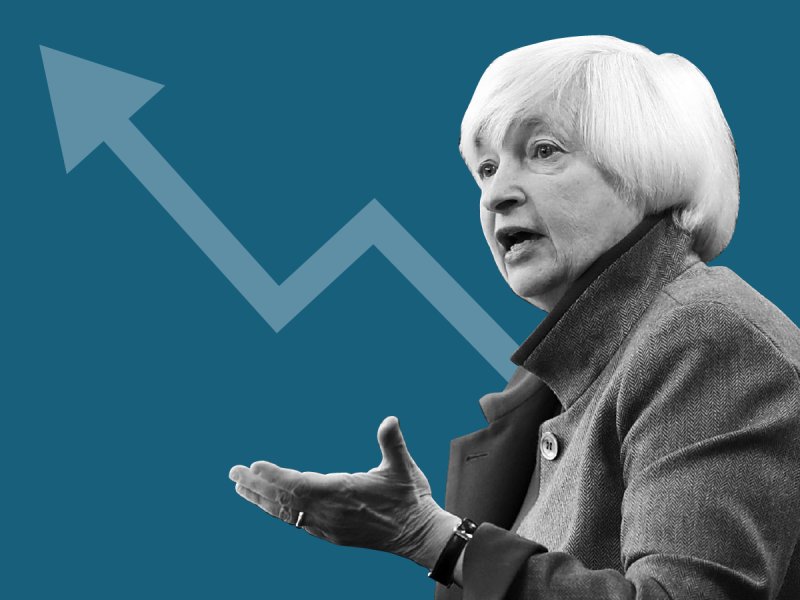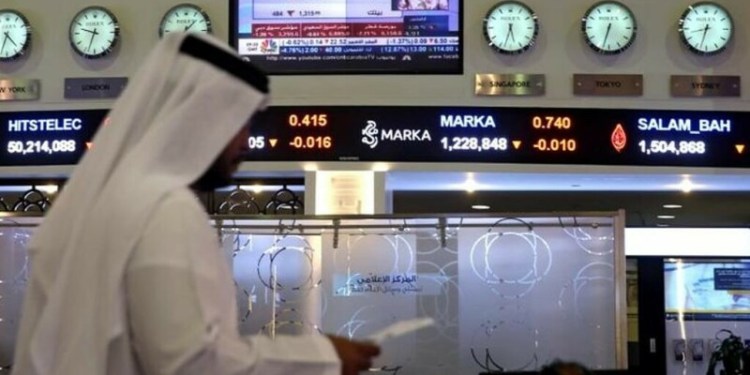 © Samantha Lee/Business Insider
© Samantha Lee/Business Insider2/2
- The Federal Reserve is set to raise its benchmark interest rate again on Wednesday.
- The Fed adjusts the interest rates that banks charge to borrow from one another, which is eventually passed on to consumers.
- Some economists say what the Fed is doing now is a bit unusual, because it’s raising rates even though inflation is quite low.
Banks give out money all the time — for a fee.
When we borrow and then pay back with interest, it’s how banks make money.
The cost of borrowing — interest rates — makes a big difference on which credit card you choose or whether you get one at all.
If your bank wants to make it more expensive to borrow, it’s not as simple as just slapping on a new rate, as a grocer would with milk. That’s something controlled higher up, by the Federal Reserve, America’s central bank.
Why does the Fed care about interest rates?
In 1977, Congress gave the Federal Reserve two main tasks: Keep the prices of things Americans buy stable and create labor-market conditions that provide jobs for all the people who want them.
The Fed has developed a toolkit to achieve these goals of inflation and maximum employment. But interest-rate changes make the most headlines, perhaps because they have a swift effect on how much we pay for credit cards and other short-term loans.
From Washington, the Fed adjusts interest rates to spur all sorts of other changes in the economy. If it wants to encourage consumers to borrow so spending can increase, which should help the economy, it cuts rates and makes borrowing cheap. To do the opposite and cool the economy, it raises rates so that an extra credit card seems less and less desirable.
The Fed often adjusts rates in response to inflation — the increase in prices that happens when people borrow so much that they have more to spend than what’s available to buy.
However, what the Fed is doing right now is a bit unusual.
‘This is the first tightening cycle where they’ve been concerned about inflation being too low,” said Alan Levenson, the chief economist at T. Rowe Price.
The Fed’s preferred measure of inflation last touched its 2% target in 2012. So the Fed can’t exactly argue that it is raising rates to fight inflation, although it expects prices to rise.
So how do rates go up or down?
Banks don’t lend only to consumers; they lend to one another as well.
That’s because at the end of every day, they need to have a certain amount of capital in their reserves. As we spend money, that balance fluctuates, so a bank may need to borrow overnight to meet the minimum capital requirement.
And just as they charge you for a loan, they charge one another. The Fed tries to influence that charge — called the federal funds rate — and it’s what they’re targeting when they raise or cut rates. When the fed funds rate rises, banks also hike the rates they charge consumers, so borrowing costs increase across the economy.
Floor and ceiling
After the Great Recession, the Fed bought an unprecedented amount in Treasurys to inject cash into banks’ accounts. There’s now over $2 trillion in excess reserves parked at the Fed (there was less than $500 billion in 2008).
It figured that one way to pare down these Treasurys was to lend some to money-market mutual funds and other dealers. It does this in transactions known as reverse repurchase operations, which basically involve selling the Treasurys and agreeing to buy them back the next day.
The Fed sets a lower “floor” rate on these so-called repos.
Then it sets a higher rate that controls how much it pays banks to hold their cash, known as interest on excess reserves, or IOER. This acts as a ceiling, since banks won’t want to lend to one another at a rate lower than what the Fed is paying them (at least in theory).
In July, the last time the Fed raised rates, it set the repo rate at 1% and the IOER rate at 1.25%. With the 25 basis-point increase expected on Wednesday, the new “floor” repo rate would become 1.25% and the ceiling 1.50%.
The effective fed funds rate, which is what banks use to lend to one another, would then float between 1.25% and 1.50%.
When the Fed raises rates, banks are less incentivized to lend, since they are earning more to park their cash in reserves. That reduces the supply of money and raises its price.
But I’m not a bank
After the Fed successfully lifts the fed funds rate, the baton is passed to banks.
Banks first raise the rate they charge their most creditworthy clients, such as large corporations. This is known as the prime rate. Usually, banks announce this hike a few days after the Fed’s announcement.
Things like mortgages and credit-card rates are then benchmarked against the prime rate.
“The effect of a rate hike is going to be felt most immediately on credit cards and home-equity lines of credit, where the quarter-point rate hike will show up typically within 60 days,” said Greg McBride, the chief financial analyst at Bankrate.com.
Source: Investing.com




























